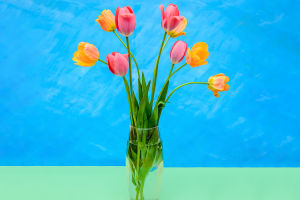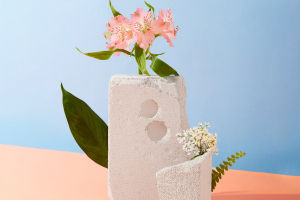Carnations are beautiful and fragrant flowers that are popular in gardens and flower arrangements. They are relatively easy to grow, and with the right care and attention, can produce blooms for several months.
Now, we will explore the steps involved in growing carnations, from planting the seeds to caring for the plants and harvesting the blooms.
1. Choosing a location
Carnations grow best in well-drained soil that is rich in organic matter.
They prefer full sun to partial shade and should be planted in an area that receives at least 6 hours of sunlight per day.
It is also important to choose a location that is protected from strong winds, as carnations have delicate stems that can be easily damaged.
2. Planting the seeds
Carnation seeds can be planted in the ground or in containers, depending on your preference.
If planting in the ground, prepare the soil by adding compost or other organic matter to improve drainage and fertility.
The seeds should be planted about 1/4 inch deep and spaced about 6 inches apart. If planting in containers, use a high-quality potting mix and make sure the container has drainage holes.
3. Watering and fertilizing
Carnations require regular watering to keep the soil moist but not waterlogged.
Water deeply once a week, or more often if the weather is particularly hot or dry.
It is also important to fertilize the plants regularly to promote healthy growth and blooming. Use a balanced fertilizer every 4-6 weeks during the growing season, following the instructions on the label.
4. Pruning and deadheading
To encourage bushy growth and more blooms, carnations should be pruned regularly.
Pinch or trim back the tips of the stems when the plants are about 6 inches tall, and continue to prune back any long stems throughout the growing season.
It is also important to deadhead the spent blooms regularly, as this will encourage the plant to produce more flowers.
5. Pest and disease control
Carnations are prone to several pests and diseases, including aphids, spider mites, and powdery mildew.
To prevent these problems, it is important to keep the plants healthy and well-maintained and to remove any infested or diseased plants immediately.
If necessary, use insecticidal soap or other organic pest control methods to control pests.
6. Harvesting
Carnations can be harvested for cut flowers when the blooms are fully open but still firm.
Cut the stems at a 45-degree angle, and immediately place them in a vase with water.
To prolong the life of the flowers, change the water every 2-3 days and add a floral preservative to the vase.
Growing carnations is a rewarding and enjoyable experience that can add color and fragrance to your garden or home. With the right care and attention, these beautiful flowers can provide months of blooms and enjoyment.


